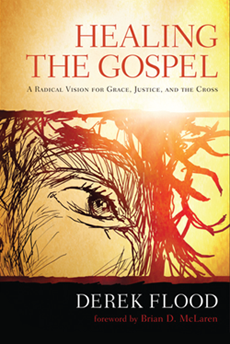Temple Sacrifice Pt. 2
Tuesday, August 22, 2006
We left off last time with God saying through Isaiah "I have no pleasure in the blood of bulls and lambs and goats". With that in mind, we turn to deal with the popular misconception that the saying “without the shedding of blood there is no forgiveness” in Hebrews 9:22 means that God needs blood in order to be able to forgive, as if it were some sort of magical incantation or legal requirement. However reading the entire verse we see it says
“The law requires that nearly everything be cleansed with blood, and without the shedding of blood there is no forgiveness” (Heb 9:22)
Here the stated purpose of the blood is not to appease through punishment, but to be “cleansed with blood”. Cleansing, or purifying as it is sometimes translated, is associated in this verse with forgiveness. The full formula of Hebrew 9 is that without being cleansed with blood there is no forgiveness. God does not need a sacrifice to forgive us or love us, we need to be made clean inside. Notice below how the writer of Hebrews continually draws a connection between blood and cleansing,
“The blood of goats and bulls and the ashes of a heifer sprinkled on those who are ceremonially unclean sanctify them so that they are outwardly clean. How much more, then, will the blood of Christ, who through the eternal Spirit offered himself unblemished to God, cleanse our consciences from acts that lead to death,so that we may serve the living God!” (Heb 9:13-14)
What does it mean to be purified by blood? In the Hebrew thought, purifying, or sanctification (making holy), involved a purging of what is impure “You must purge the evil from among you” (Dt 13:5 et al). The blood represented, in the Jewish thought, the life of the animal “For the life of a creature is in the blood (Lev 17:11) So the temple sacrifices involved ceremonial act of purging oneself of sin, as Paul says by “dying to sin in us” (Ro 6) vicariously through the death of the animal on the altar. This is understood more broadly, again in terms of consecration, giving over to God “The blood... sprinkled on those who are ceremonially unclean sanctify them”. The function of blood here is not to appease, but to “purge out evil” - to sanctify. A similar thought today would be the idea of removing a cancer from our bodies. The two ideas of consecration and sanctification are in fact closely related because the concept of “setting apart” (consecration) is similar to the idea of “purging out evil” (purification). This idea flowed over into their understanding of health conditions and the idea of a person being “unclean” or of certain foods as “unclean”.
This idea of devotion and purification through blood is still of course quite foreign to us today, yet it is a practice found in nearly every ancient culture and one that predates the Jewish temple sacrifice. Unless we want to write all these cultures and people off as “primitive” we would need to assume that there is something reflected in the practice that connects to a fundamental part of our shared human experience. The word “atonement” literally means “made at-one” and generally speaking, all of the various sacrifices can be said to be about connectedness. The first fruits offering expressed an acknowledgment that what we had was not ours alone. The Passover sacrifice expressed a solidarity with God's people in times of trouble. The thanksgiving offering expressed in gratitude an acknowledgment of our connectedness to others. Specifically in the case of the sin offering it was a sense of restoring a broken connection that had been severed by sin. Sacrifice was a ritual that allowed people to work through the very real guilt they felt and their desire to atone for it, not understood in the legal context of a requirement (as if God really needs a cow) or an appeasement (as if one could bribe God or buy his love) but as a way provided by a loving God to work through our guilt and restore our lost connection to God, ourselves, and others. Again, not in the sense of dealing with mere “guilt feelings” disconnected from reality, but of dealing with the alienating reality of a stained conscience. It enacted symbolically the faith that God could make us clean again, mending the bond we had severed.
Labels: sacrifice, Satisfaction






2 Comments:
Just a note regarding Jesus cleansing the Temple with a whip. In the Mishnah, I believe, it instructs the High Priest, that during the Day Atonement he should spread the blood around the temple in a whip-like motion. The cleansing of the Temple represented the cleansing of the earth, healing the damage that had been done.
Another thing to think about, is that the High Priest applied the blood to the mercy seat. In the Gospel we see the mercy seat in John 20:11-12. Mary looks into the tomb and sees the mercy seat. The two angels sitting where Jesus had been laid, is the ark the covenant.
cool symbolism Buck, thanks for sharing that
Post a Comment
<< Home